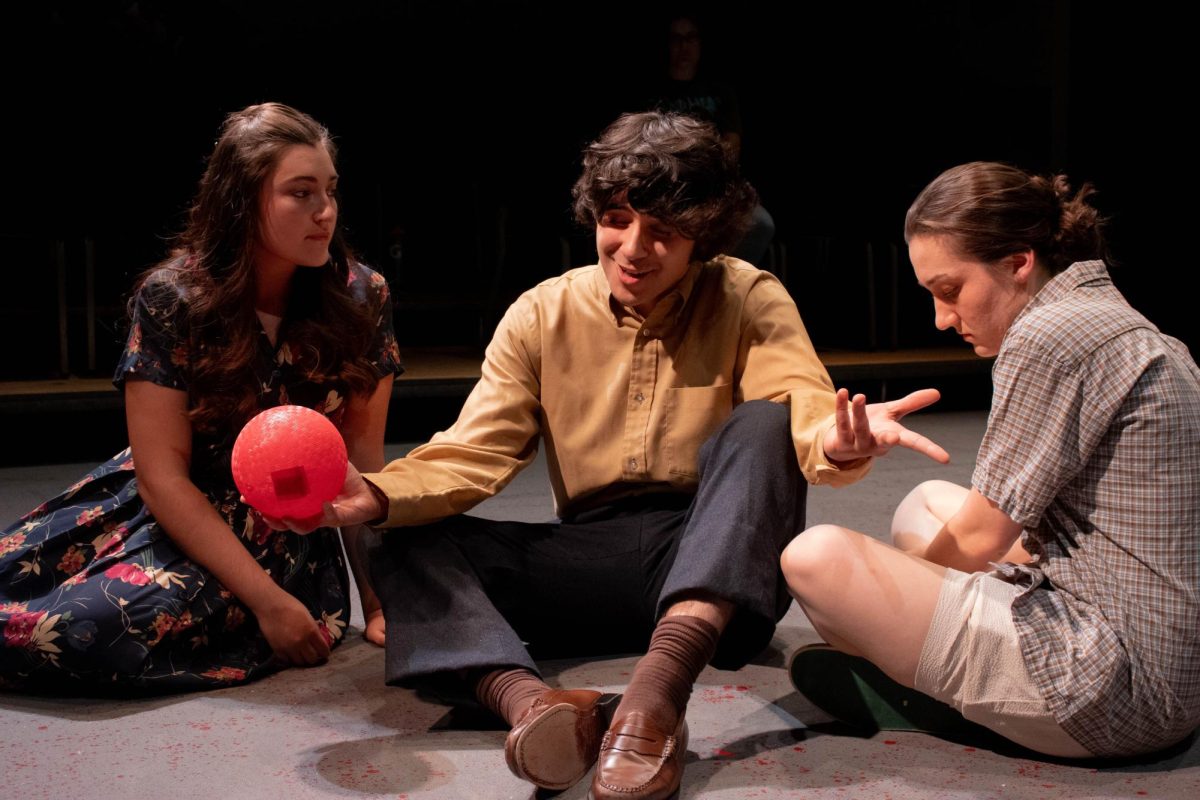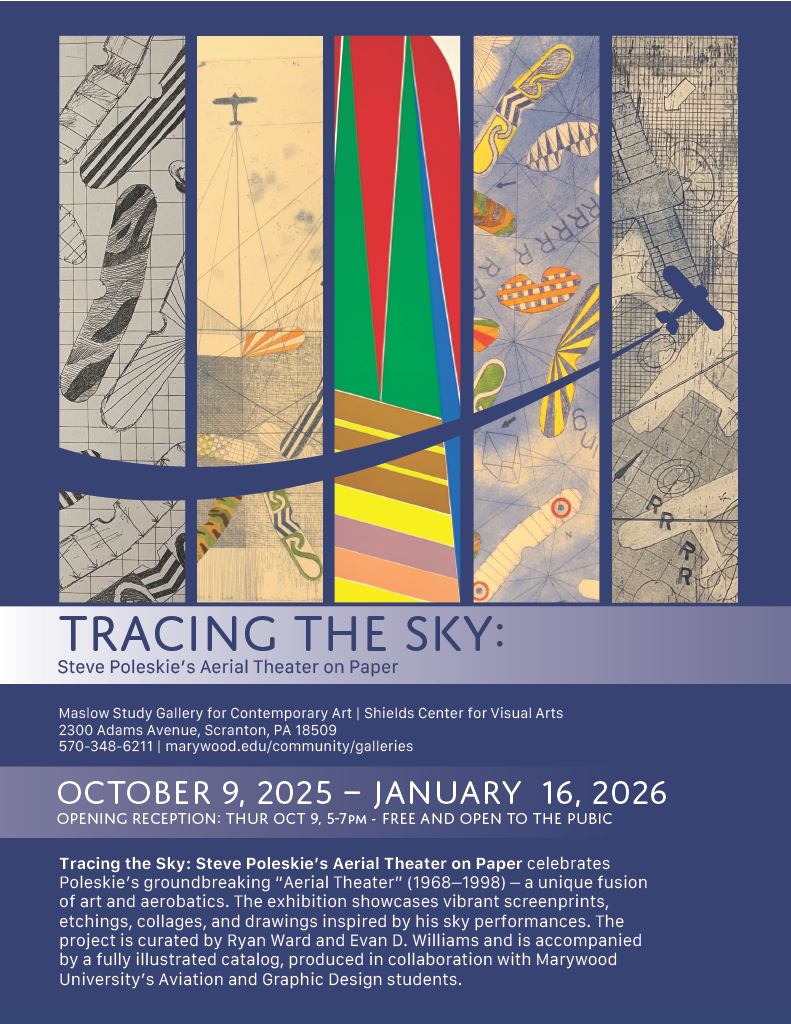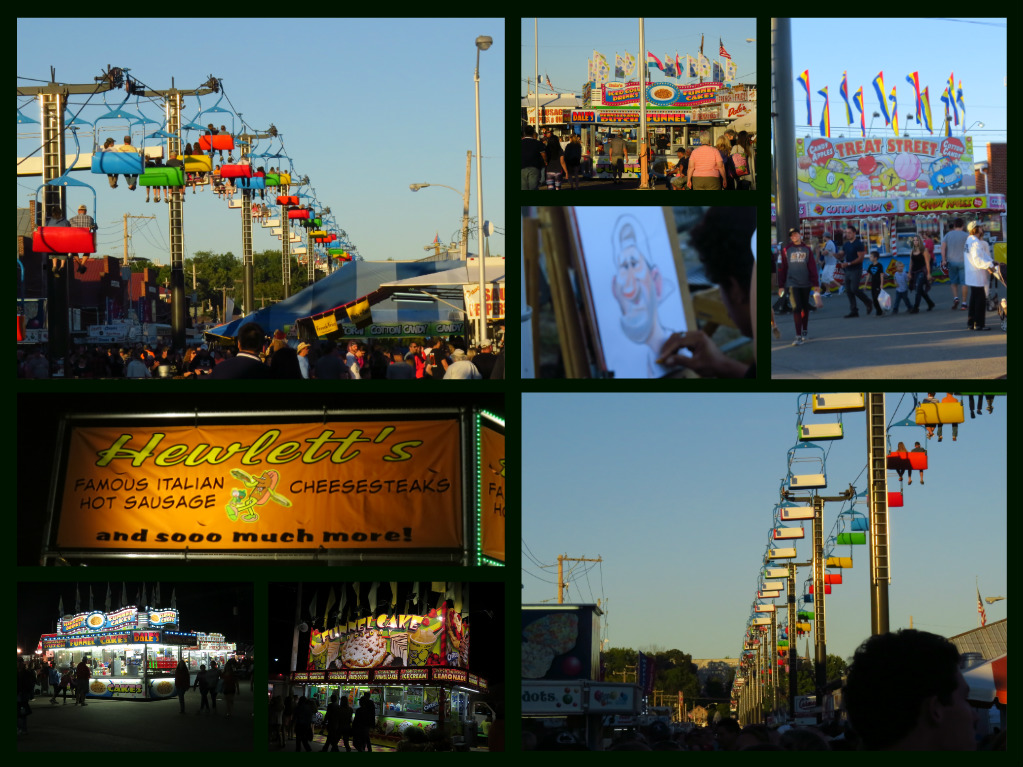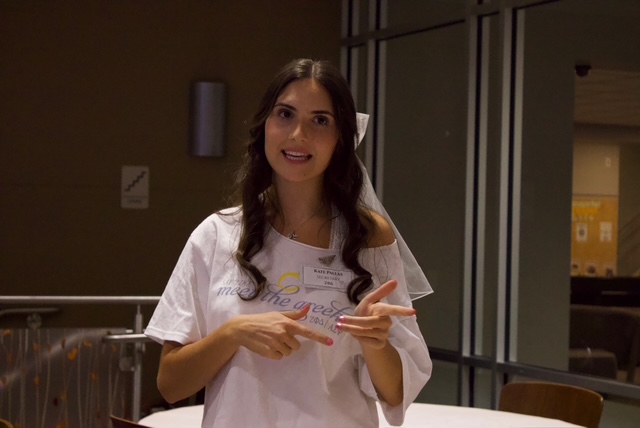This past weekend, Marywood presented its latest stage production by the Marywood Players: the play “Mad Forest,” written by Caryl Churchill. Written in 1990, in collaboration with university students in Romania, the play’s three acts respectively deal with the before, during and after of the Romanian Revolution, where the country’s leader Nicolae Ceausescu was executed by firing squad. Aside from the second act, which contains the cast acting out real testimonies from real people who were on the scene of the Revolution in December 1989, the play takes on a slice of life/vignette format, following two families as they live their lives and deal with their own troubles. After the Revolution, paranoia and distrust runs high, threatening to ruin the carefully lived lives they’ve all built up.
Right away, you’re immersed into the world of the play by its unusual seating and set lay out. Instead of taking your seat in the Munley Theater inside the Sette LaVerghetta Performing Arts Center, you’re instead led backstage, up the stairs, and down a corridor, where the name of the play is graffitied onto a wall amidst propaganda posters for Ceausescu. From there, you take your seat in a “theater in the round” style seating arrangement, with more propaganda posters behind the seats. It does a good job of not only setting up the political climate of the play’s first act, but also making each of the tense, emotional moments much more hard hitting with how close you are to the actors. In some cases, they would sit down right beside you while waiting for their turn to speak.
But enough about the aesthetics, how is the play itself? The first act, where vignettes start and stop almost constantly, certainly created a sense of uneasiness but did little to establish its characters. We get familiar with them through their circumstances: One is a teacher, another is moving to America, still another is a priest. Their names don’t stick, however, until the much more traditional third act. There, the vignettes are more like your average scene in a play, allowing you to properly acquaint yourself with these characters just in time for everything to start spiraling into madness.
It’s the second act, however, that serves as the show’s highpoint. Although criticism could undoubtedly be drawn from the fact that it is mainly just acting out other people’s stories, that is its strength. The tension and emotion from all of these different perspectives-some are students, some are Army soldiers, and there are even humble painters and construction workers-build and build, each of them soon becoming overwhelmed by the Revolution and its effects for different reasons. You genuinely become immersed in all of their stories. It all ends with these many different people and perspectives coming together to sing a few bars of the Romanian national anthem, showing the one thing that binds them is their proudness of where they’re from.
Not even this proudness can save our fictional characters, however, as the unease and distrust from the aftermath of the Revolution grows more and more in the third act. In a heartbreaking scene, the teacher, Flavia, is in danger of losing her job due to the school believing that she’s still advocating the old regime. Her own son is one of the people who wants her to lose it, citing a moment when he was no older than 7 where she told him she loved Ceausescu. He has no pity for her and after a brief spat between them, he storms off. Scenes like this are all over the third act, and it’s clear why “Mad Forest” was chosen as this year’s play: Politics and great events like this sow seeds of division and distrust, and we may not realize we are acting harshly or doing bad things because of this until it is too late. We should come together over our commonalities instead of hating people over their differences.
I feel like the ending, which sees a wedding escalate into a full on brawl, should’ve gone on longer, exploring the ramifications of this hate and paranoia instead of being cut off with a dance. Some of the more surreal elements, like a genuine vampire becoming friends with a hungry dog, also came out of nowhere, and it took me until I was driving home to think about them in symbolic terms, which was probably the point. None of this, however, can be blamed on the cast, each of whom are wonderful and elevated the play into not just one about the Romanian Revolution, but a play about ignorance and prejudice. The set design was also simple yet effective, given it was such a small space.
I don’t feel like I can end this review, however, without talking about something that slightly ruined the experience but had nothing to do with the cast or the script. Behind me, for almost the entire play, was a trio who made it their mission to snicker constantly and be disruptive to our entire little cluster of seating. They refused to take the material seriously, slamming down their water bottles and making constant asides. Let this be a lesson to those sorts of people who would go to a performance of a show such as this: In disrespecting the actors, you are disrespecting the stories of the people they are embodying. Although this play was certainly challenging to follow at times, it’s certainly nothing to snicker at. Don’t be the person who ruins the experience for everyone else.
Contact the Writer: [email protected]
























